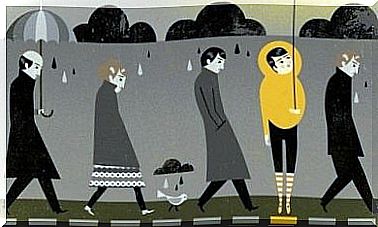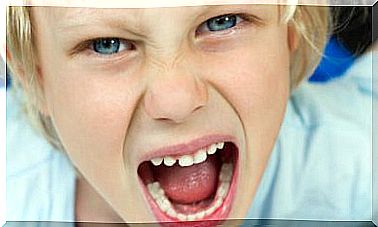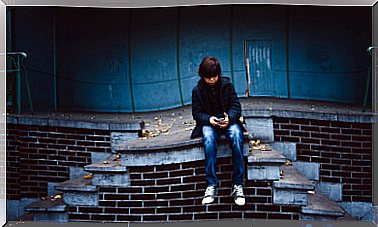Grief In Children: How Can We Help Them Deal With It?
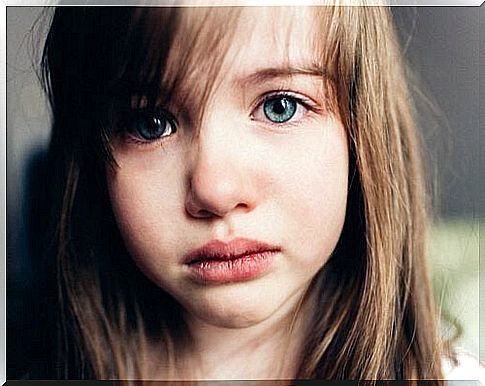
No one escapes grief, not even children. Losing someone, an unexpected situation, a missed opportunity… Sadness in children is more common than we think. That’s why we have to be there for them when they need us.
It is also important that we educate them on the formation of conscience and the management of emotions. That way, they will later be able to express their feelings properly.
The movie “Inside Out” (“Intensa-Mente in Latin American Spanish and “Del Revés” in European Spanish) can help children better understand how important the fundamental feelings are in our lives. It also shows them how to recognize and express these feelings.
As with fear, happiness, or anger, we need to teach children from an early age how to properly channel grief.
Help children understand what sadness really is
When we meet someone who looks sad, we usually walk in a different direction. It’s like we’re afraid we’ll get it ourselves. So we always prefer to be with happy people. Grief in children, like in adults, is a necessary and essential emotion. Without sadness we wouldn’t know exactly what joy feels like.
It definitely happens much more often that we experience this feeling in adulthood. That has to do with everything we could have experienced up to that point.
Grief in children can seem a bit shocking. How strange would it be to see a little one of five years old sitting alone in his seat, staring at the horizon or absorbed in his inner life?
We often assume that their innocence, their delicate intellectual maturity and their superficial cares assure them of a solid joy… But that is not the case.

This does not mean that children cannot feel sad. They do. It actually happens more often than we think. Sometimes it’s something useful. At other times it is unavoidable. For example, children may feel melancholy due to the loss of a family member or pet, changing schools, a new environment…
Ways in which grief is expressed in children
Like adults, children can express their emotional state in different ways. When they are happy and having fun, it is normal for them to laugh, play and be happy.
When frightened, they usually don’t move and are silent until the shock is over. When they are sad, the way they express this emotion is not so clear.
Sometimes they will show opposite behaviors in one day. This behavior hides how they really feel. Let’s look at some examples of how grief is expressed in children:
- Hypoactivity: They appear exhausted, sleepy, apathetic, indifferent, little talkative. They also have little appetite. In addition, they cry a lot, even when there is no obvious cause.
- Hyperactivity: they eat too much. They also seem anxious. In addition, they do not want to sleep and they chat too much.
If parents and guardians are to discover whether children are grief-stricken, they must be prepared for sudden changes in behavior and emotional atmosphere.
How can we help children cope with grief?
If you notice any unusual or excessive behavior in your child, ask how he or she is feeling. They will probably close in on themselves or not know how to answer. However, we already know that in the early stages of their development, children are like sponges.
Children learn from their parents’ emotional expressions. The parents are therefore actually the reference for the children in this area. Parents should explain to their children that it’s okay to feel sad. Everyone experiences it at some point.
However, they should also explain to them that they can better deal with this emotion if they recognize, confront and accept it.
Using images, drawings, or simply talking to them about grief, you can strengthen their ability to recognize grief. Once they know how to spot it, you need to teach them how to deal with it. You can do this with examples of how you yourself show sadness.
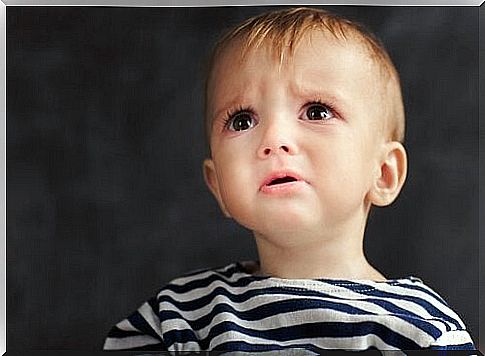
What does not help children?
Unfortunately, it is more of a “trend” to mask sadness than to deal with it. From a young age we learn to smile instead of cry. We learn to suppress our sadness. Handling our emotions properly, however, makes it less likely that we’ll have an emotional outburst later on.
- Mocking: The phrase “you’re a whiner” is terribly negative when a child cries. All this reaction does is put an end to their emotional expressiveness. It makes them withdraw. They are also forced to hide their grief. It’s an incredibly negative way to make fun of their feelings.
- Pressure them: It’s very common that we demand an answer when our children don’t answer our question immediately. It is important that we know that they will only speak when they feel we are supporting them. Then it doesn’t matter how long it takes. It is fundamental that you make them feel that they are heard and supported at all times.
- Minimize the importance: “That’s nothing, it’s just weird. Don’t do that.” Phrases like this don’t help at all. That’s because the event that caused the grief is actually very important to them. So what you need to do is reduce the potential pain or distress caused by the event rather than minimize the impact.
- Reprimand or rebuke them: “You are under house arrest for not stopping crying!” After such a thing, they will do only one thing: stop crying and suppress their grief. We refer here again to line one. A hug, on the other hand, will make them feel very good. They will then feel full of strength and energy.
Finally
As you can see, the key lies in the role of the people in the environment of the children. It is they who help them understand that they need not be afraid to be sad. We must not lose sight of grief in children.


